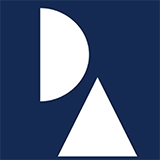Introduction
Domus Academy, founded in Milan in 1982, is the first graduate school of design in Italy. It is also a research laboratory focusing on design, aesthetics and design marketing. It is known as "the famous Italian school that has shaken the history of human design".
Overview
Student size: Since 1983, its master's program has attracted more than 1,200 students from 58 countries. The academy has 94% international students, and the student composition is diverse, which is conducive to the integration of cultural exchange and design concepts.
Faculty: Many design masters such as Philippe Starck, Andrea Branzi, Alessandro Mendini, etc. often come to teach. In addition, there are more than 90 faculty members. Most of the teachers are not only experienced in the field of design practice, but also have a deep theoretical research background, and can provide students with professional and cutting-edge design education.
History
Founded in 1982 by Mazzocchi of Domus magazine Family-founded, it quickly became a leader among design schools in the early stages of its development. It continued to innovate and forge ahead, gradually forming a unique education model and design culture. It joined the Laureate International University Network in 2009 and was acquired by the British Galileo Global Education Group in 2018.
Establishment time
1982.
School strength
Teaching resources: The school is located in Milan, the capital of fashion and design, which provides students with rich design resources and practical opportunities. Students can be exposed to the latest design trends and participate in various design exhibitions and activities. In addition, the school also has advanced teaching facilities and equipment to meet the needs of students in design practice.
Academic research: As a research laboratory, the college has carried out in-depth academic research in the field of design. Its research results not only promote the development of design theory, but also provide theoretical support for students' practice. Through close cooperation with enterprises, the research results are transformed into practical applications, which improves students' practical ability and employment competitiveness.
Nature of the school
Private design school.
Educational philosophy
Emphasis on the close integration of design education and design research, focusing on cultivating students' innovative thinking and practical ability, and guiding students to constantly reflect and introspect in the design process to improve the design level.
Highlighting the Italian design style and cultural roots, while paying attention to global design trends, cultivating design talents with international vision and cross-cultural communication ability, so that students can be competitive in the global design market.
Key laboratories and disciplines
Key disciplines: covering multiple fields such as design, fashion, and business, Including interior and environmental design, product design, urban landscape and architectural design, fashion design, fashion management, design management, luxury marketing, etc. These disciplines are closely integrated with market demand and industry development trends, providing students with a variety of professional choices.
Key laboratories: No specific key laboratories are explicitly mentioned, but the college as a whole, as a research laboratory, provides students with a platform for practice and research. Students can participate in various design projects and research topics on this platform to improve their design capabilities and innovative thinking.
Department
The college has a design department, a fashion department, a business department, etc. Each department has multiple professional courses, including:
Design department: such as interior and life design, product design, urban vision and architectural design, information design, interactive design, service design, visual brand design, etc.
Fashion department: There are fashion design, fashion management, fashion styling and visual marketing, etc.
Business department: covers commercial design, luxury brand management, etc.
Ranking
In In the 2023 QS World University Rankings, it was ranked in the top 150 in the world in the field of art and design, and in the top 5 in Italy; in the 2024 global fashion school rankings, it was ranked 34th.
Fees
Tuition fees: Tuition fees for different professional courses vary. Taking the master's program as an example, the annual tuition fee is about 20,000-25,000 euros.
Other fees: application fee 100 euros, reservation fee 3000 euros.
Campus environment
Geographic location: The main campus is located at Via Carlo Darwin 20, Milan, Italy, 20143 Milan, near the Navigli area of Milan, only a few minutes away from the main city of Milan. The surrounding cultural atmosphere is strong, full of artistic atmosphere and design vitality, providing students with rich sources of inspiration and practical opportunities.
Campus facilities: The campus building has a modern and design sense, with complete internal facilities, equipped with professional design studios, laboratories, libraries, exhibition halls, etc., providing good conditions for students' learning, creation and communication.
-
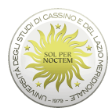
University of Cassino and Southern Lazio
-

University of Campania Luigi Vanvitelli
-
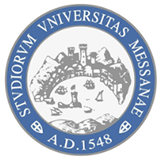
University of Messina
-
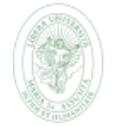
Libera Universita degli Studi Maria SS. Assunta di Roma (LUMSA)
-

University of Bari Aldo Moro
-
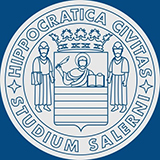
University of Salerno
-
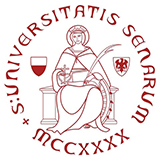
University of Siena
-
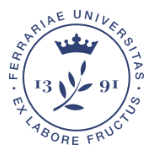
University of Ferrara
-
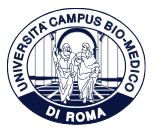
Campus Bio-Medico University of Rome
-

University of Genoa
-

Mesoamerican University
-

Istmo University
-

Mariano Galvez University of Guatemala
-

Regional University of Guatemala
-

Galileo University
-

Francisco Marroquín University
-

Rafael Landívar University
-

University of the Valley of Guatemala
-

University of San Carlos of Guatemala
-

Technological Institute of Tlaxcala Plateau
-

Golfo University
-

Technological University of South Sonora
-

Technological University of Huejotzingo
-

Tizimín Institute of Technology
-

Chilpancingo Institute of Technology

